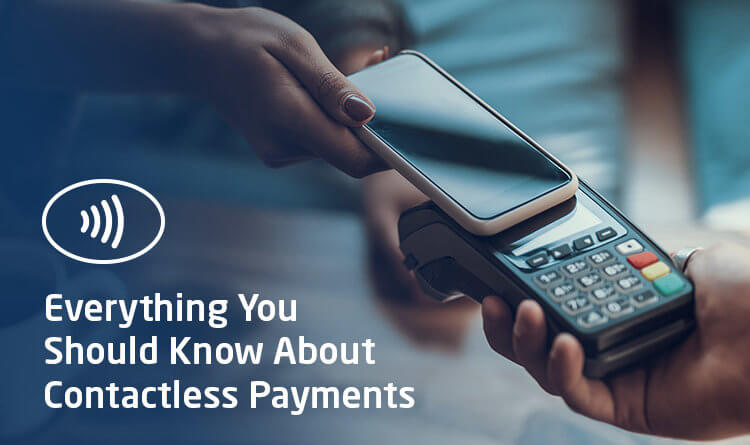Everything You Should Know About Contactless Payments
As contactless payments explode in popularity (purchases made with mobile wallets grew by 82% this past Black Friday as compared to 2018!), now’s the time to fill in your knowledge on what exactly they are, how they work, and why customers increasingly prefer to pay with them. Keep reading to learn more!
What Are Contactless Payments?
Contactless payments utilize near field communication (NFC) technology to enable communication between two electronic devices. Near field communication is a short-range wireless communication system in which data is transmitted over radio waves between two devices that are in close range. Contactless-enabled payment methods are tapped on the compatible card reader to allow for the secure transmission of payment data.
There are two main types of contactless payments:
Contactless Cards
Contactless cards are credit or debit cards that have an antenna embedded in the card to enable transmission of payment data.
Mobile Wallets
Mobile wallets are apps, like Google Pay or Apple Pay, in which the customer can store their card information. At checkout, the customer opens the app and taps their mobile device on the card reader.
When Were Contactless Payments Introduced?
Contactless technology has been around since the late 1990s. Over the past 10 years, contactless card payments have grown in popularity across Europe, Australia, Canada, and Asia—in fact, a recent survey shows that contactless card payments make up 20 percent of all card-based transactions in Australia, the U.K., Canada, and South Korea.
Here in the U.S., contactless payments have struggled to pick up steam until quite recently.
Why Are Contactless Payments Finally Becoming More Popular in the U.S.?
There are a couple of reasons why contactless payments have begun to take off in the U.S.:
More Card Brands are Issuing Contactless Cards
Over the past year, several major card brands—such as Chase, Wells Fargo, and American Express—have ramped up their issuance of contactless cards. According to Visa, it’s expected that there will be 300 million contactless cards issued in the U.S. by the end of 2020!
Mobile Wallets are Becoming More Popular
Between 2016 and 2018, the rate of in-store mobile wallet usage was actually declining. But in 2019, the number of payments made in-store with mobile wallets grew by 5%! Apple Pay is now the most popular mobile wallet among consumers, followed by Chase Pay.
Many Merchants Already Support Contactless Payments
Many EMV-enabled terminals also support contactless payments, and the EMV liability shift in 2015 spurred most U.S. merchants to upgrade their equipment. This means that a large number of merchants are currently able to accept contactless payments without making extensive changes to their setup.
What Are the Benefits of Contactless Payments?
Contactless payments bring merchants and customers alike a number of benefits:
Faster Checkout Process
Contactless payments are simply tapped on the card reader, and the cardholder does not need to enter a PIN.
Enhanced Security
Contactless payments utilize EMV chip card technology, which is much more secure than magnetic stripe transactions and has already proven to lower fraud rates. Plus, contactless payments do not transmit the cardholder’s name or security code, which makes it harder for fraudsters to make unauthorized purchases by intercepting contactless card data.
Note that mobile wallets offer an additional layer of security in that the cardholder has to enter the password on their device in order to open their mobile wallet.
Can Be Connected to Customer Loyalty Programs
Mobile wallets can be easily linked to rewards and loyalty programs, which are increasingly preferred by customers—a recent survey shows that 63% of customers prefer to use payment methods that offer rewards!
Ready to start accepting contactless payments? Reach out to Cardknox today to learn more about our seamless payment solutions for in-store, online, and mobile devices.


